Daniel Schuster
ProMoAI: Process Modeling with Generative AI
Mar 07, 2024Abstract:ProMoAI is a novel tool that leverages Large Language Models (LLMs) to automatically generate process models from textual descriptions, incorporating advanced prompt engineering, error handling, and code generation techniques. Beyond automating the generation of complex process models, ProMoAI also supports process model optimization. Users can interact with the tool by providing feedback on the generated model, which is then used for refining the process model. ProMoAI utilizes the capabilities LLMs to offer a novel, AI-driven approach to process modeling, significantly reducing the barrier to entry for users without deep technical knowledge in process modeling.
A Framework for Extracting and Encoding Features from Object-Centric Event Data
Sep 02, 2022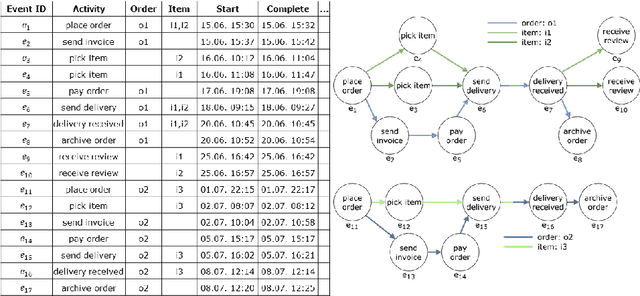

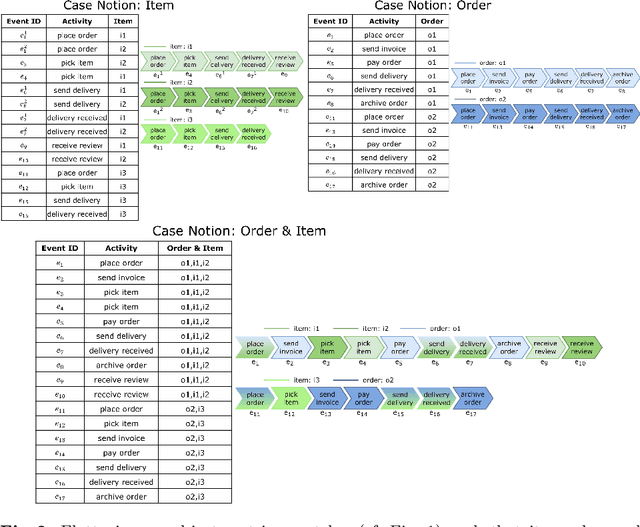
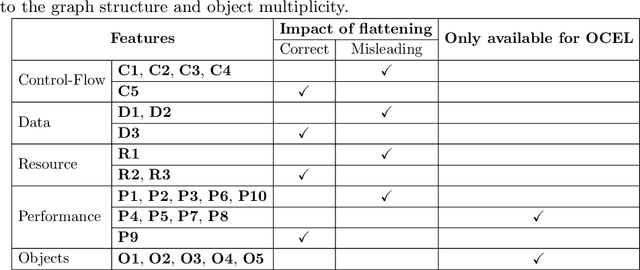
Abstract:Traditional process mining techniques take event data as input where each event is associated with exactly one object. An object represents the instantiation of a process. Object-centric event data contain events associated with multiple objects expressing the interaction of multiple processes. As traditional process mining techniques assume events associated with exactly one object, these techniques cannot be applied to object-centric event data. To use traditional process mining techniques, the object-centric event data are flattened by removing all object references but one. The flattening process is lossy, leading to inaccurate features extracted from flattened data. Furthermore, the graph-like structure of object-centric event data is lost when flattening. In this paper, we introduce a general framework for extracting and encoding features from object-centric event data. We calculate features natively on the object-centric event data, leading to accurate measures. Furthermore, we provide three encodings for these features: tabular, sequential, and graph-based. While tabular and sequential encodings have been heavily used in process mining, the graph-based encoding is a new technique preserving the structure of the object-centric event data. We provide six use cases: a visualization and a prediction use case for each of the three encodings. We use explainable AI in the prediction use cases to show the utility of both the object-centric features and the structure of the sequential and graph-based encoding for a predictive model.
Defining Cases and Variants for Object-Centric Event Data
Aug 05, 2022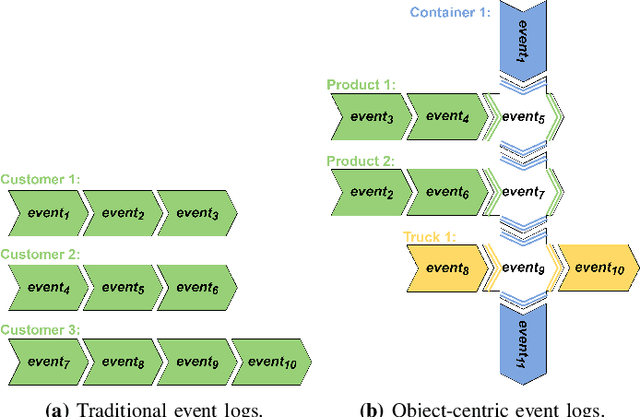
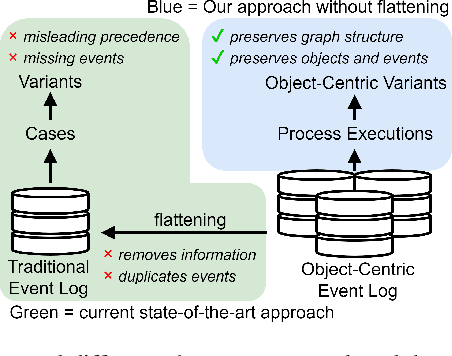
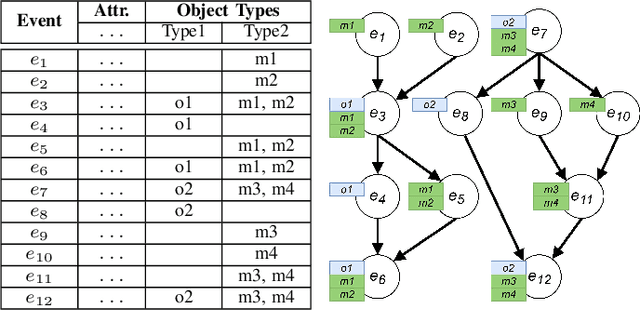
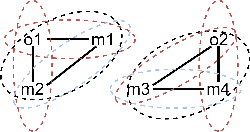
Abstract:The execution of processes leaves traces of event data in information systems. These event data can be analyzed through process mining techniques. For traditional process mining techniques, one has to associate each event with exactly one object, e.g., the company's customer. Events related to one object form an event sequence called a case. A case describes an end-to-end run through a process. The cases contained in event data can be used to discover a process model, detect frequent bottlenecks, or learn predictive models. However, events encountered in real-life information systems, e.g., ERP systems, can often be associated with multiple objects. The traditional sequential case concept falls short of these object-centric event data as these data exhibit a graph structure. One might force object-centric event data into the traditional case concept by flattening it. However, flattening manipulates the data and removes information. Therefore, a concept analogous to the case concept of traditional event logs is necessary to enable the application of different process mining tasks on object-centric event data. In this paper, we introduce the case concept for object-centric process mining: process executions. These are graph-based generalizations of cases as considered in traditional process mining. Furthermore, we provide techniques to extract process executions. Based on these executions, we determine equivalent process behavior with respect to an attribute using graph isomorphism. Equivalent process executions with respect to the event's activity are object-centric variants, i.e., a generalization of variants in traditional process mining. We provide a visualization technique for object-centric variants. The contribution's scalability and efficiency are extensively evaluated. Furthermore, we provide a case study showing the most frequent object-centric variants of a real-life event log.
Freezing Sub-Models During Incremental Process Discovery: Extended Version
Jul 31, 2021



Abstract:Process discovery aims to learn a process model from observed process behavior. From a user's perspective, most discovery algorithms work like a black box. Besides parameter tuning, there is no interaction between the user and the algorithm. Interactive process discovery allows the user to exploit domain knowledge and to guide the discovery process. Previously, an incremental discovery approach has been introduced where a model, considered to be under construction, gets incrementally extended by user-selected process behavior. This paper introduces a novel approach that additionally allows the user to freeze model parts within the model under construction. Frozen sub-models are not altered by the incremental approach when new behavior is added to the model. The user can thus steer the discovery algorithm. Our experiments show that freezing sub-models can lead to higher quality models.
 Add to Chrome
Add to Chrome Add to Firefox
Add to Firefox Add to Edge
Add to Edge